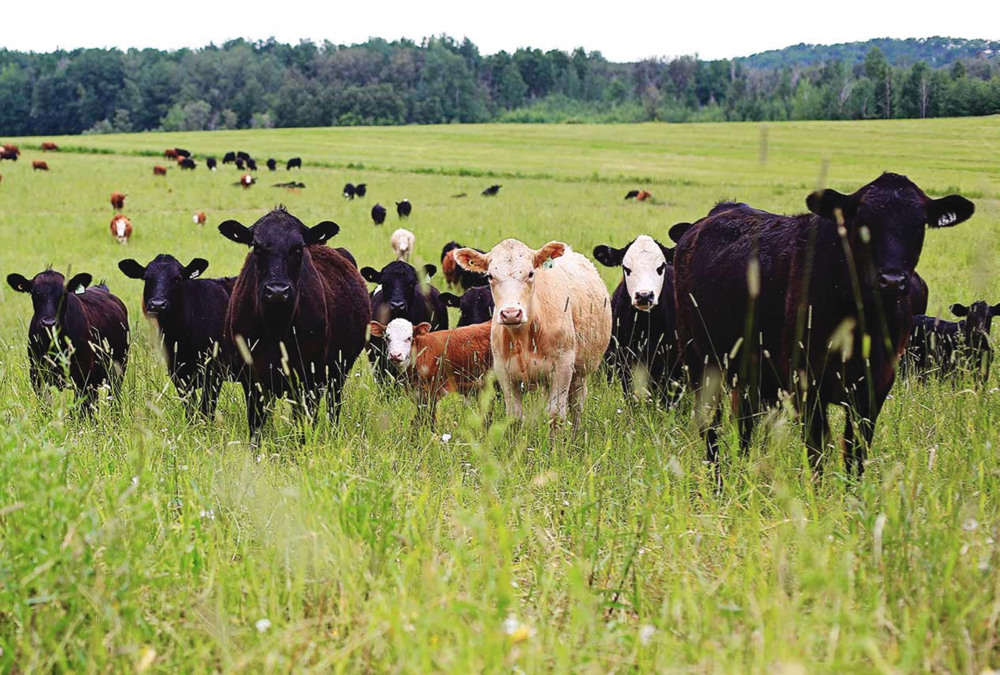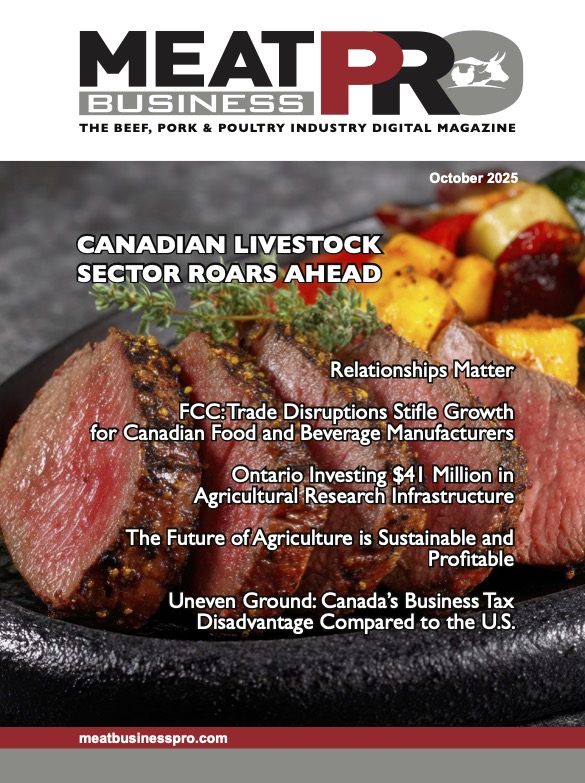Processing capacity continues to weigh on Ontario beef industry

While the beef industry in Grey-Bruce weathered 2020 and the challenges that came with the COVID-19 pandemic, work continues to address concerns around packing capacity in the province
by Rob Gowan – Post Media
Rob Lipsett, president of Beef Farmers of Ontario, participated in Beef Day at Grey Bruce Farmers’ Week on Wednesday, where he said finding solutions to address the lack of processing capacity continues to be top priority for the industry in the province.
“We didn’t suffer too much until December when Cargill (in Guelph) had to close and Norwich Packers also had to close for a little while due to COVID”
“We are working on short-term, medium-term and long-term solutions to the processing capacity,” said Lipsett, who runs cow-calf and backgrounder operations near Annan. “Most of them are involving both the federal and provincial government and some kind of funding to spearhead expansion.”
In the spring, processing plant closures and slowdowns due to COVID-19 outbreaks, delays in getting cattle to market in the U.S. due to a tightening border and lower restaurant demand because of shutdowns, resulted in a backlog of cattle ready for market and depressed prices for producers. But those were short-lived, Lipsett explained.
“I would suggest that early in the pandemic we fared really well,” Lipsett said. “The processors that continued to operate were working through at about 122 per cent of capacity.”
But Ontario producers are again seeing lower prices for their cattle with the shutdown of a Guelph processing plant because of a COVID-19 outbreak last month.
“We didn’t suffer too much until December when Cargill (in Guelph) had to close and Norwich Packers also had to close for a little while due to COVID,” he said.
But that lack of processing capacity was impacting beef farmers even before the pandemic hit, after a major Ontario plant closed in the fall of 2019, Lipsett explained. Other factors that have weighed heavily on the industry include U.S. plants taking fewer Canadian cattle, an overabundance of cow culls in the Ontario market and plant closings in Quebec in recent years.
Lipsett said BFO continues to lobby governments, and both the federal and provincial governments have been open to talks about more programming and ways to increase processing capacity as well as supports for the sector.
He said the beef industry had an obvious win last year with an additional $50-million invested into a risk management program for farmers as well as changes to the fund that manages allocations on a sector-specific basis.
The Canadian and Ontario governments have also invested funds into a set-aside program, allowing beef farmers to apply for funding to cover the increased costs with setting aside and feeding market-ready cattle during process delays brought on by the pandemic.
The program was activated for Ontario producers in late December following the shutdown of the Guelph plant.
Lipsett said BFO was really pleased when that funding was made available.
And funds were also earmarked for improvements at Ontario meat processors and abattoirs.
“This was positive news for the struggling sector, but we know more needs to be done to ensure our industry as a whole remains viable and competitive,” he said.
The BFO has proposed the formation of a beef processing infrastructure fund that would support large projects that would increase processing capacity through a combination of loans and cost-share funding, Lipsett said.
“Rest assured that remains vital to us and number one on the priority list,” Lipsett said of increasing processing capacity.
Beef Day on Wednesday was the first commodity day at the 55th annual Grey Bruce Farmers’ Week, which was forced to go fully virtual this year because of the pandemic.
Wednesday’s session also included Anne Wasko, a market analyst with Gateway Livestock in Saskatchewan, who gave a Canadian beef market update.
Wasko said an interesting scenario has been playing out in the Canadian cattle market in recent years.
She explained that while the country’s cow herd is the smallest it has been in more than three decades at 3.61-million head, more cattle than ever are being finished in Canada.
“How we have come about this is basically a change in feeder cattle trade between western Canada and the U.S.,” Wasko said. “Historically western Canada has been a net exporter of feeder cattle.”
But Wasko said that has been changing since 2017 with fewer Canadian feeder cattle being exported to the U.S. to be finished at the same time as more U.S. cattle are being brought north of the border to be finished.
She said that while final data isn’t yet available, she expects Canada to be a net importer of feeder cattle of about 150,000 head in 2020.
“When you think about the swing, going from a 300,000 or 400,000 net exporter of feeder cattle, to now a 150,000 on the net import side, you can see that swing of basically half-a-million head of cattle,” she said. “That is basically how many cows have been removed from our inventory over the past decade.”
Wasko said a surprising factor that has come out of the pandemic has been the increase in consumer demand for beef this year. Canadian retail beef demand was up about 3.6 per cent in 2020 and one of the top years on record, despite prices that shot up in the spring before levelling off.
Wasko said the lockdowns and more people working from home meant that more people were cooking at home, and as a result were looking for comfort foods like ground beef and steaks.
“Typically when we see prices at the retail level shoot up like they did, especially in the summertime, then we tend to see consumers back off and turn to cheaper-priced proteins,” Wasko said. “That has historically been the mantra, when retail prices go up consumers will spend their dollars elsewhere, and that simply did not happen.”
Other Beef Day speakers included a panel talking about direct marketing beef featuring Julie and Ethan Higginson of Higginson Farms in Meaford, Mike Dougherty of Wild Meadows Farm at Conn and Joan Craig of Blue Sky Beef at Arthur. The panel was facilitated by OMAFRA beef cattle specialist Megan Van Schaik.
Greg Dimmers, a veterinarian, gave a presentation on enhancing feedlot health, while Kathleen Shore, a ruminant nutritionist with Grand Valley Fortifiers made a presentation on beef nutrition and the sciences of raising quality cattle.
John Molenhuis, a business analysis and cost production specialist presented on measuring financial performance, while field veterinarian Denis Nagle also made a presentation.
The annual conference kicked off on Tuesday with a virtual trade show. The show featured about 60 exhibitors from across the province in virtual booths. The booths can also be viewed by farmers’ week registrants for 30 days after the show.
Full details on the speakers participating is available at gbfw.ca.












